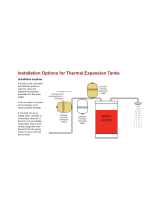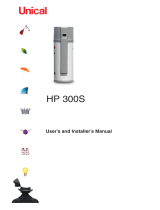
Table of contents
2 Installation and maintenance instructions ecoTEC pro 0020129672_03
Table of contents
1 Notes on the documentation .....................................4
1.1 Storing documents ..........................................................4
1.2 Symbols used ....................................................................4
1.3 Applicability of the instructions ...................................4
1.4 Identification plate ...........................................................4
1.5 CE label ...............................................................................4
1.6 Benchmark .........................................................................5
1.7 Type overview ...................................................................5
2 Safety .................................................................................6
2.1 Safety and warning information ..................................6
2.1.1 Classification of warnings ..............................................6
2.1.2 Structure of warnings .....................................................6
2.2 Intended use ......................................................................6
2.3 Basic safety instructions ................................................6
2.4 Important information regarding
propane-fired boilers .......................................................7
2.5 General requirements .....................................................7
2.5.1 Related documents ..........................................................7
2.5.2 Installation site .................................................................8
2.5.3 Gas supply .........................................................................9
2.5.4 Air supply ...........................................................................9
2.5.5 Compartment ventilation ...............................................9
2.5.6 Electrical supply ...............................................................9
2.5.7 Water supply Combination boilers ...............................9
2.5.8 Water circulation system................................................9
2.5.9 Pressure relief valve ...................................................... 10
2.5.10 Venting ............................................................................. 10
3 Description of the appliance ......................................11
4 Installation ......................................................................12
4.1 Accessories .......................................................................12
4.1.1 Controller ..........................................................................12
4.1.2 Installation and operation .............................................12
4.2 Scope of delivery ............................................................12
4.2.1 Unpacking the boiler ......................................................12
4.2.2 Checking the scope of delivery ...................................12
4.2.3 Disposing of the packaging ..........................................13
4.3 Transporting the appliance ..........................................13
4.4 Requirements for the installation site .......................15
4.4.1 Required minimum clearances/
installation clearances ...................................................15
4.4.2 Using installation templates .........................................15
4.5 Dimension drawing and connection
measurements .................................................................16
4.6 Wall-mounting the boiler ...............................................17
4.7 Removing/fitting the front casing ..............................17
4.8 Removing/fitting the side panel ................................. 18
5 Gas installation ..............................................................19
5.1 Preparing for installation ..............................................19
5.2 Connecting the gas pipe ...............................................19
6 Hydraulic installation ................................................ 20
6.1 Preparing for installation ............................................ 20
6.2 Connecting the hot and cold water ............................21
6.3 Connecting the heating flow and heating return....21
6.4 Low loss header ..............................................................21
6.5 Connecting the condensate discharge pipework ....21
6.6 Connecting the discharge pipe to the expansion
relief valve on the boiler ..............................................22
7 Flue gas installation ...................................................23
7.1 Air/flue gas duct .............................................................23
7.2 Flue termination .............................................................24
8 Electrical installation .................................................26
8.1 Preparing for installation .............................................26
8.2 Opening/closing the electronics box .........................26
8.3 Establishing the mains connection ............................26
8.4 Connecting the controller ............................................27
8.4.1 Fitting the controller .....................................................27
8.4.2 Connecting controllers to the electronic system ...28
8.5 Connecting additional components via VR 40 –
connecting a "2 in 7" multi-functional module ......28
8.6 Connection wiring diagram .........................................29
9 Operation ....................................................................... 30
9.1 Overview of the read-off and setting options ........ 30
9.2 Calling up the installer level ....................................... 30
10 Commissioning ...............................................................31
10.1 Switching on the boiler ..................................................31
10.2 Using test programs .......................................................31
10.3 Preparing the heating water .......................................32
10.4 Read off the filling pressure ........................................32
10.5 Filling and purging the heating installation ............32
10.5.1 Filling the heating installation ....................................32
10.5.2 Purging the heating system ........................................33
10.5.3 Flushing the system for the first time ("cold") ......33
10.6 Avoiding low water pressure .......................................33
10.7 Fill and purge the hot water system .........................33
10.8 Filling the condensate trap ..........................................33
10.9 Checking the gas setting............................................. 34
10.9.1 Factory setting ............................................................... 34
10.9.2 Checking for tightness of the flue gas
installation and flue gas recirculation ..................... 34
10.9.3 Checking the gas flow rate ......................................35
10.9.4 Checking the gas inlet working pressure .................35
i
BEFORE PROCEEDING - ENSURE BOILER IS
CORRECT FOR GAS GROUP SUPPLIED!






















